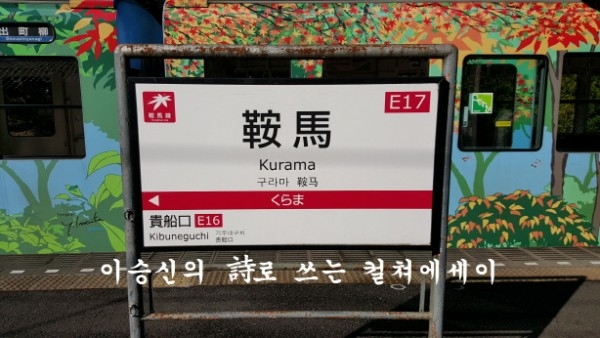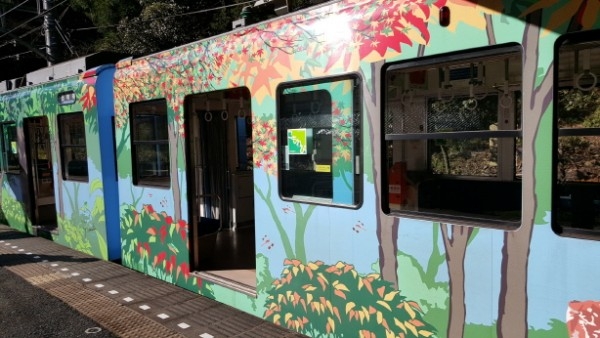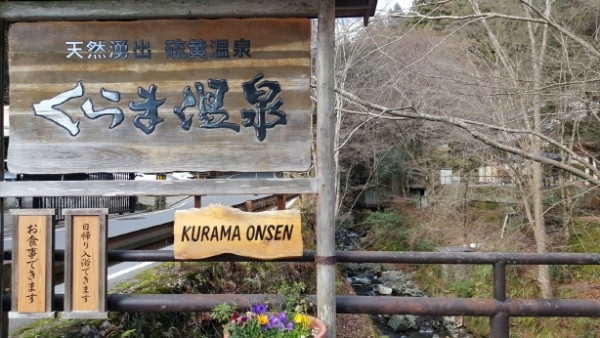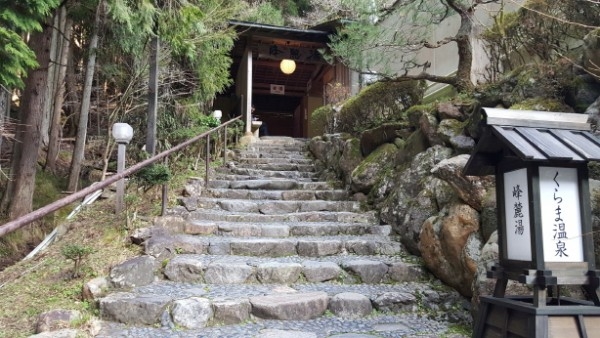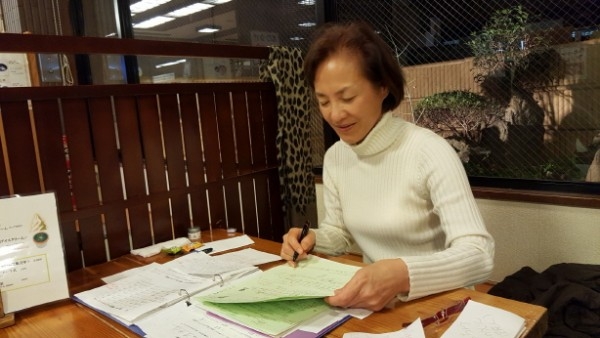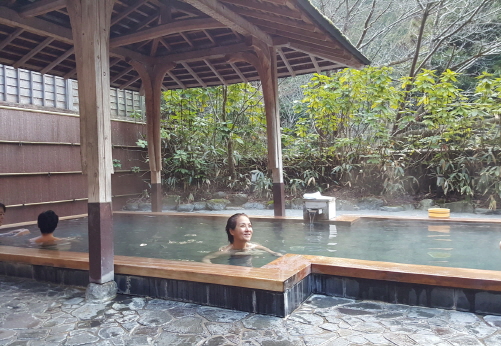February 19, 2016
Kurama Onsen
What Korean people enjoy the most during their trip to Japan is Onsen (hot spring). I am also one of them.
Maybe because I came here, not as a tourist, but as a student, I never heard about any hot spring sites in Kyoto.
Although I heard of a great hot spring place located far away, I had no time to go. After passing spring and summer as such, from the last fall semester, I finally started to ask around if there is any hot spring in or around Kyoto. I was told that there are none in the city center, but one could go to Kurama and Arashiyama 嵐山, which are not well-known, by trolley.
It was too complicated to get to Arashiyama, however, it takes twenty minutes to get to the last stop, Kurama from Demachiyanagi 出町柳 station, which is a-short-bridge away over the Kamogawa River from my place. I usually do not take subways in Seoul, because I always miss my station thinking about something and it ends up taking more time toing and froing. It is the same with a trolley in Japan. But the last stop, however, is hard to miss.
At my first attempt to go to Kurama, however, I just got off the trolley where I thought it to be the last stop, given that many people were storming out of the trolley. It was a classy countryside situated next to a long valley with little waterfalls. In the following week, I got off at the last stop to find myself in a totally different place. I was told that the station I got off the previous week was not, after all, the last stop Kurama, but the previous one, Kibune貴船, which is a famous site for a couple's dating course with a shrine known for bonding people to get married, its hot spring, and an remarkably romantic atmosphere.
Both places were cozy, but I chose the pleasantly simple Kurama. It was less expensive and, above all, I do not have to worry about missing my stop because it's the last one. I always went there during my exam periods in order to study.
I chose Kurama as my six-tatami-room is too small. Once I arrive at its station, there is not much to see, but the fresh air from the dense forest of Japanese cedar trees penetrates my chest. A van from the hot spring site waits for its guests in front of the station to give them a ride.
On the left side of Kurama station situated the Mount Kurama, in which a legendary warrior was once training, and in front the mountain is seen a mask of Tengu with its big red nose. Once you pass the Kurama shrine, you will soon find the Kurama Onsen Ryokan. Although there are only three rooms for overnight, there are many guests because its outdoor hot-spring bath is open for those who visit this place as a day trip. Generally, use of a hot spring in a Ryokan is limited to its Ryokan customers and is usually very pricey. Koreans often naively ask to simply get a Ryokan, but a Ryokan is of way higher quality and more expensive than a hotel. It is because of its good personal service.
There are a fair number of westerners, assumingly because of its Internet advertisement. I often see Koreans talking out loud in Korean in the quiet hot spring.
I climb up the stone steps for a short outdoor hot spring bath, climb back for a light meal with Soba or Tofu at a neat restaurant of the Ryokan, and then study for the examination for the next day. I succeed in killing two birds with one stone in the middle of winter.
Located in the north of Kyoto, it often snows in Kurama when it is not in Kyoto. Then one can enjoy an outdoor hot spring bath in the snow. For the whole intensive fall semester, I have been looking forward to the day to go to Kurama Onsen after class during weekdays.
It is because of my late discovery of the healing place.
A stream flows under the Kurama Valley - January 2016 Stone steps to the outdoor hot spring spot with Kurama Mountain at the back
Studying after hot spring, Kurama Hot Spring Restaurant - January 2016
Spring Cherry blossoms in the mountain in front of Kurama outdoor hot spring and autumn leaves
--------------------------------------------------
Lee Sunshine Poet, essayist, chief director of Son Hoyun Tanka Research Center, Graduate of the department of English Literature at Ewha Woman’s University, Graduate school of Georgetown University, Washington and Syracuse University, New York, currently studying at Toshisha University, Kyoto A member of the international cooperation committee at Korean Broadcasting Commission, Production adviser at Samsung Media & Cheil Worldwide
Publications A Journey of Healing and Realization, Holding My Breath, Colored by Okinawa, How Could Anything But Blooming Spring Exists in Life? Where There is Your Heart, a Flower Blooms, etc.
|

